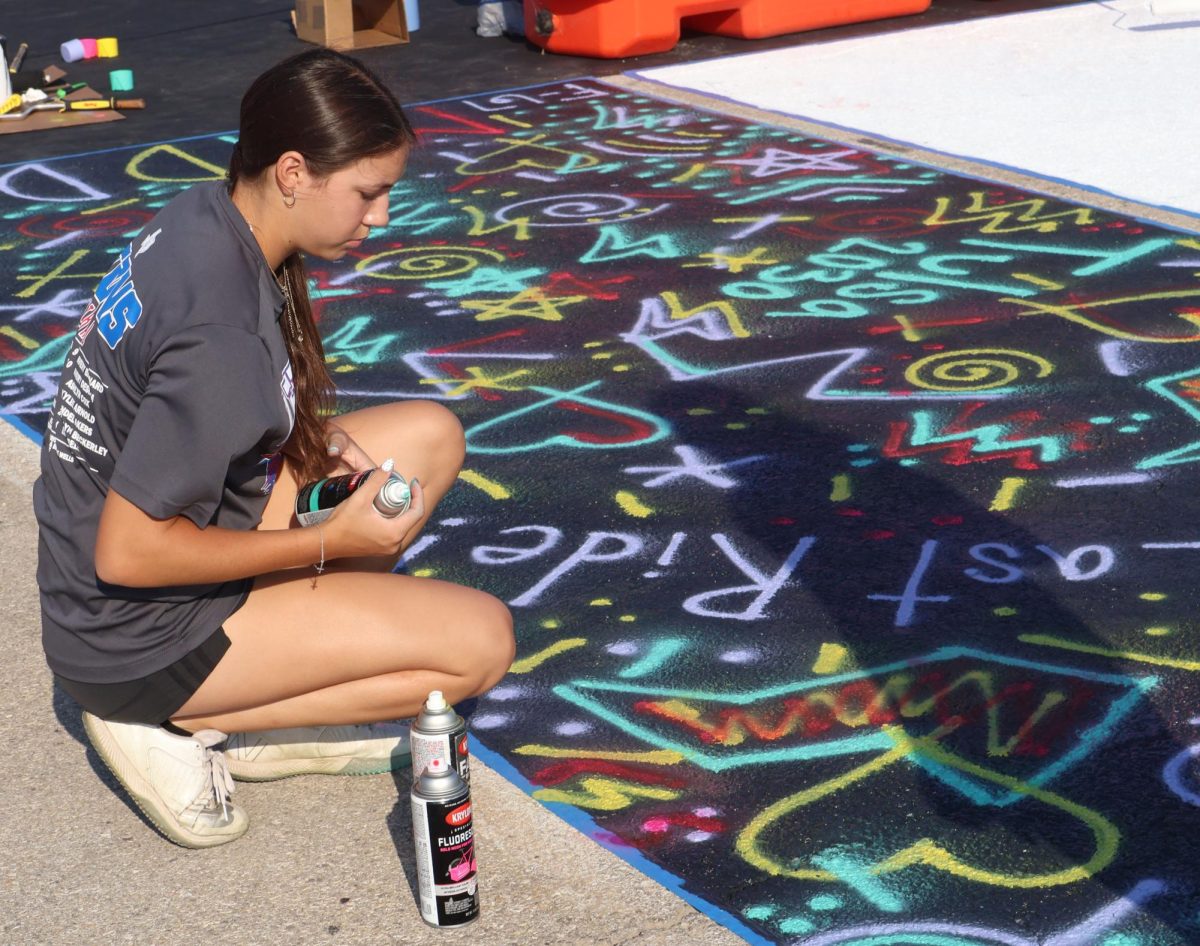Jump scares, how the majority isn’t frightening
A form of horror that has been sweeping the nation that does not belong with the other scare tactics and might as well be the weakest.

A very accurate rendition of a jump scare, a form of horror that’s the least horrifying.
November 3, 2015
Boo! It’s a simple word commonly used with toddlers trying to scare older people. When kids do it, it’s precious and on the adorable side. When film makers, or anybody in visual media, does it, it’s called a jump scare.
Simply put, jump scares are not frightening and oversaturate the horror genre, letting actual tension and scares take the backseat.
Jump scares shouldn’t be the main focus of terror in a film because they are a one and done type thing. Do it once, never again, but most horror stories now are guilty of breaking this rule. It happens once and the viewer or player might jump. It happens again, they are irritated. The third time, they lose all interest. With these being overused, it hurts the film or project as a whole. The viewer probably won’t remember that really good atmospheric scare, they’ll be complaining about that time the ghost turned up in front of the characters a third time trying to scare them like a spastic.
These techniques also don’t have a whole lot of build-up. Alien had this constant build up of its scares and when the viewer finally sees the xenomorph, it’s bone-chilling. The audience never saw the monster and it made the viewers mind go into a panic, trying to think of the worst possible design for the alien. In Five Night’s At Freddy’s, it’s the opposite. The audience sees the monsters straight up, there’s no buildup, no tension rising, they just kinda show up and attempt to scare the viewer, the key word being “attempt.”
Jump scares don’t pray on basic fears. If something screwed with what the watcher is afraid of, it’d be that much scarier. The idea of It Follows is the fear of being watched and making the viewer both horrified and paranoid. With a jump scare, the director is trying to scare the entire audience all at once and failing miserably at it. With horror, much like all genres, the media can’t appeal to everyone. Some people will be scared regardless and some won’t. The director should stick to the people who will be scared of what he envisions, not to the lowest common denominator.
There are some people who will say jump scares make the horror genre that much more exciting, that they make the thing viewers are experiencing that much more interesting, and there’s a good answer on how to make things more exciting or interesting. It’s called getting a good writer or director, maybe even both. Scratch that, definitely both. A good duo could turn, say, a tire, into a force to be reckoned with without having something jumping out every five seconds and give it a good buildup. Horror media is slow, methodical. Much like soup, it takes time to make it truly good, and popping it into the microwave won’t help it reach its full potential.
Jump scares are the one hit wonders of horror; it’ll make the audience scared once and it’ll fail to do it again, unlike terror that uses atmosphere, music, and acting to make a truly memorable scare for years to come.







